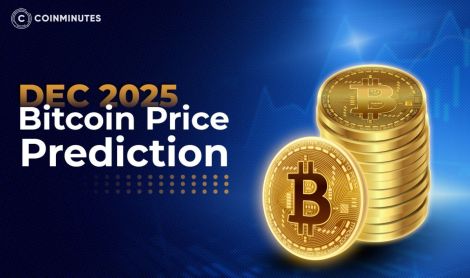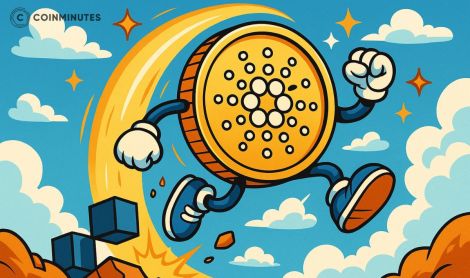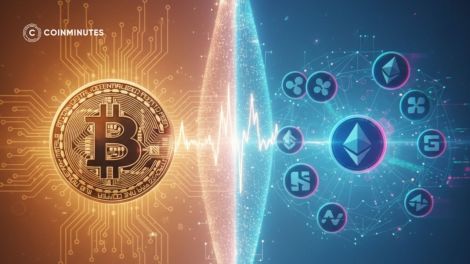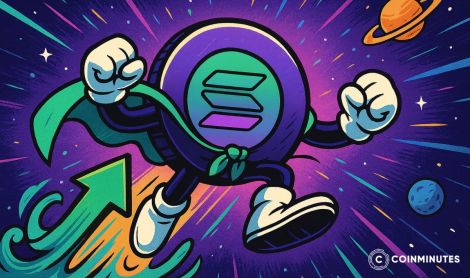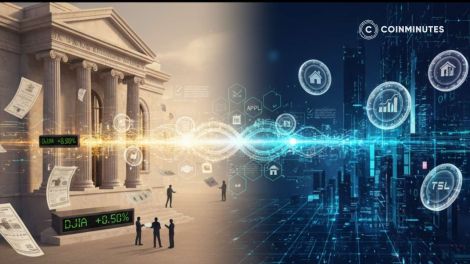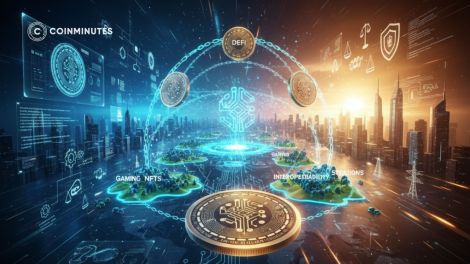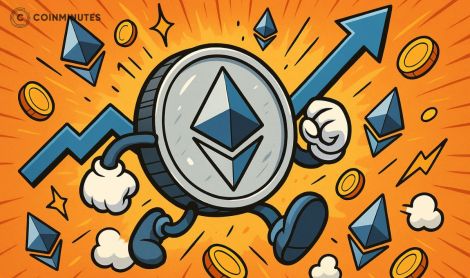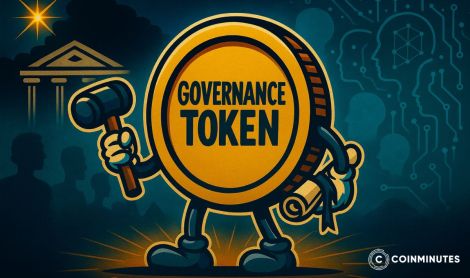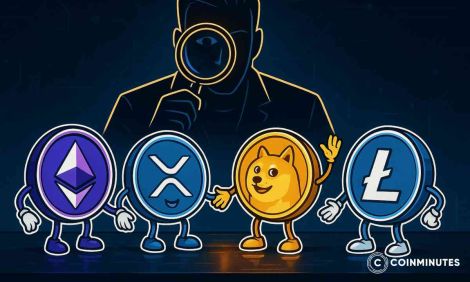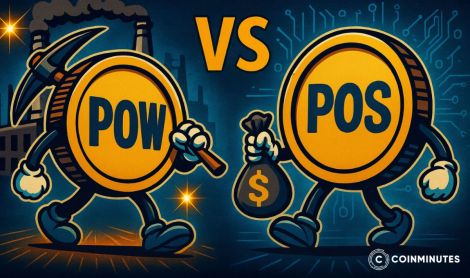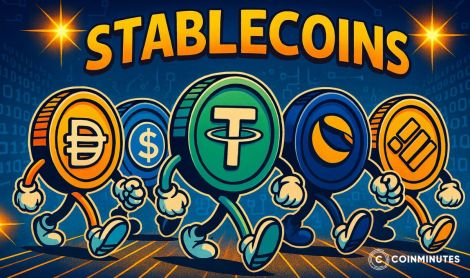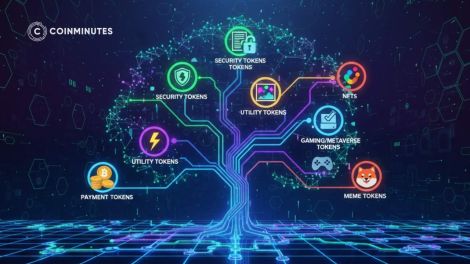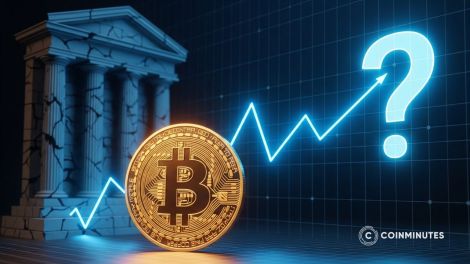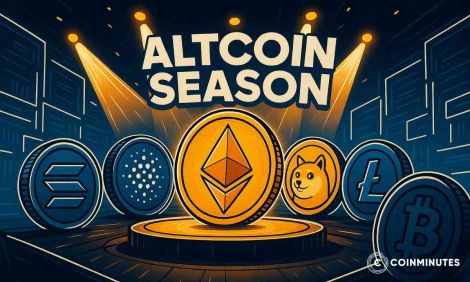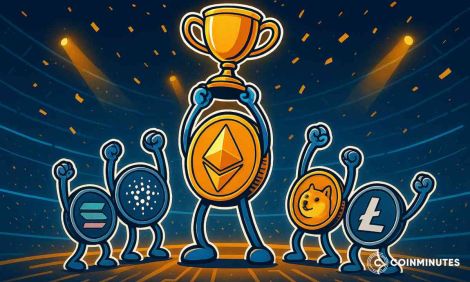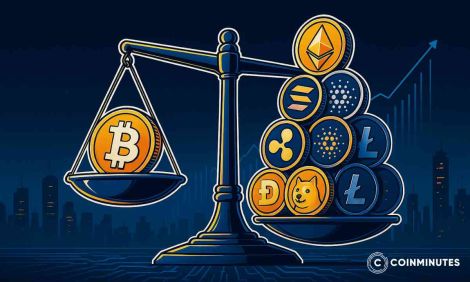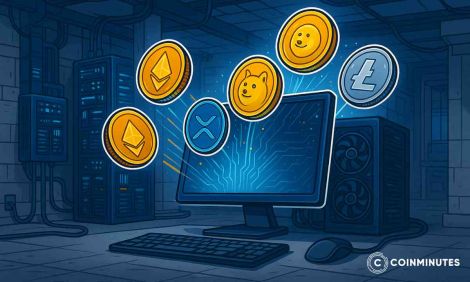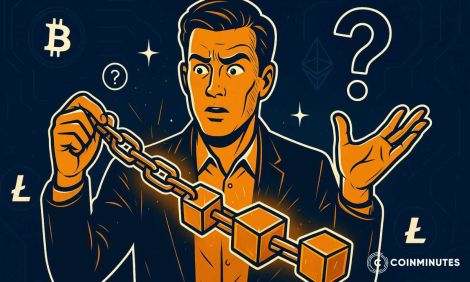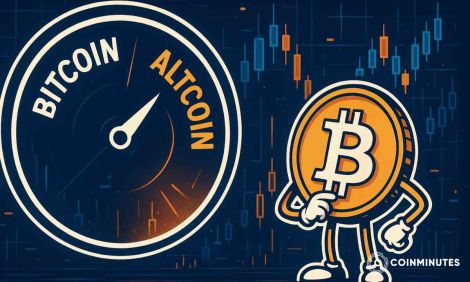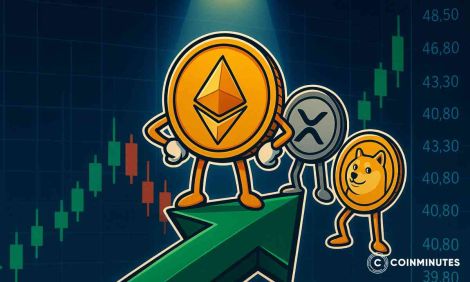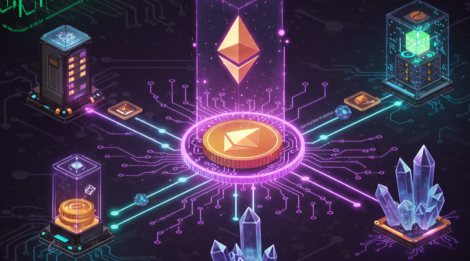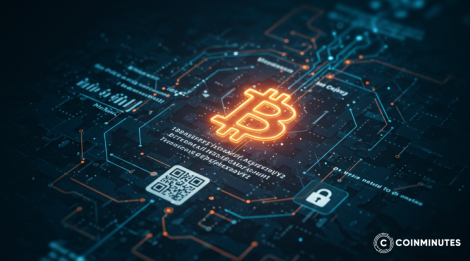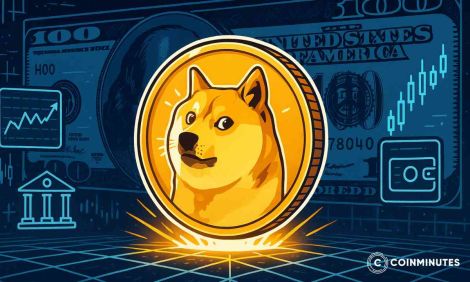Everything About Altcoins: Journey Into the World of Alternative Cryptocurrency
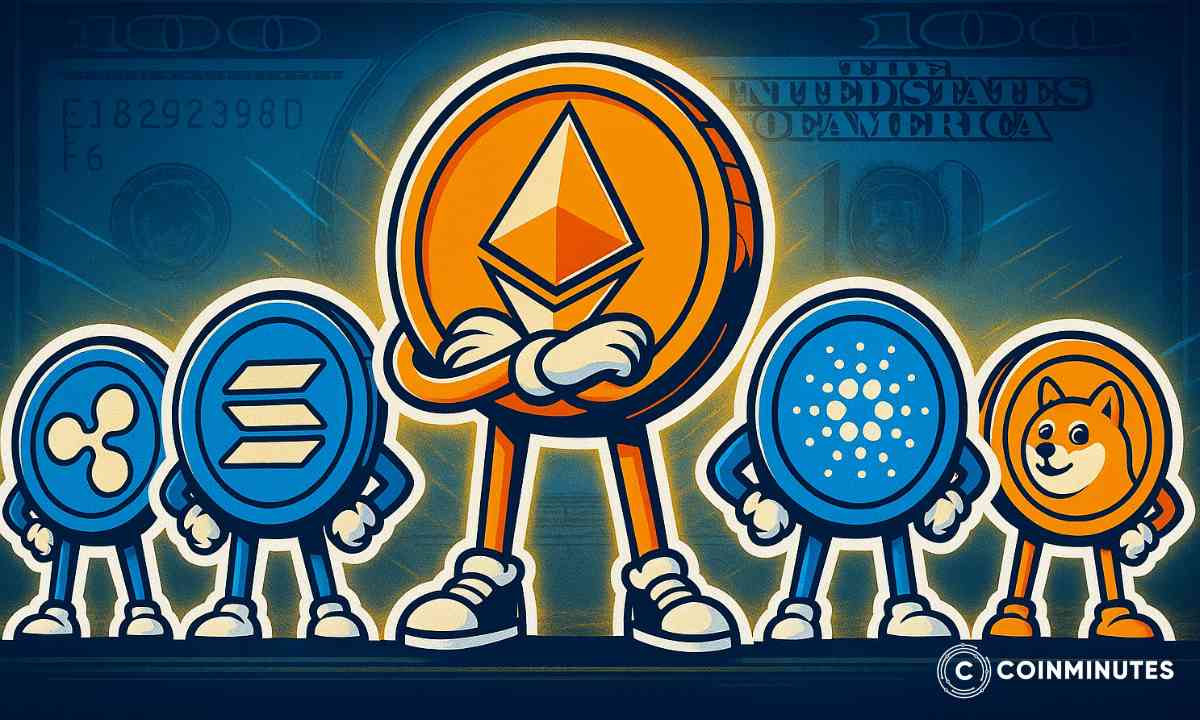
So, you’ve heard about Bitcoin. It’s the king of the crypto jungle, the one that started it all. But focusing only on Bitcoin is like going to a massive music festival and only watching the headliner. You'd be missing out on all the other amazing, weird, and wonderful acts playing on the side stages.
That's the world of altcoins.
It's a sprawling, chaotic, and incredibly creative space with thousands of different projects, each trying to build the future in its own unique way. Understanding this world is key to understanding crypto as a whole. At CoinMinutes, we're here to give you a clear map to this exciting territory.
A Clear Definition of Altcoins
What is an altcoin? Just a coin. "Alternative coin." It means that it is not Bitcoin. Bitcoin was the first, the one who paved the way for the whole blockchain concept back in 2009. The whole bunch of new ones that appeared afterwards is still referred to under this broad 'altcoin' umbrella.
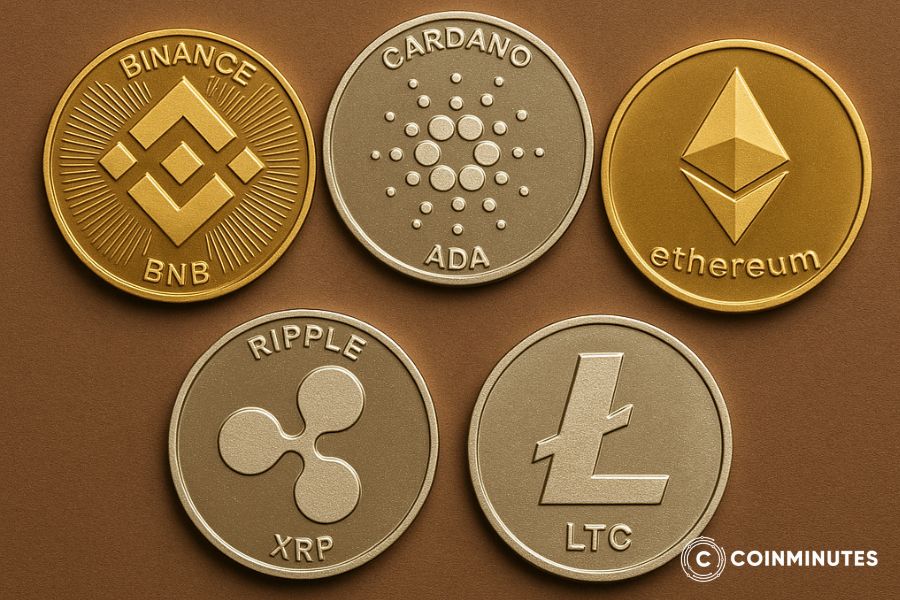
The initial start of these alternatives appeared in 2011. Litecoin (LTC) was the leader among the followers, aiming to be a lighter and faster version of Bitcoin. The goal was usually to follow the Bitcoin plan and change it. It could have had a different mining algorithm, shorter block times, bigger coins supply, or new privacy features. Some altcoins are direct "forks" of Bitcoin. They took the software code of Bitcoin and then they decided to develop their own way. Others were created from scratch, with new blockchains, various honesty keeping methods, and their own rules.
How Do Altcoins Work
You don't need to be a computer scientist to get the basics. Most altcoins are created in one of two ways.
Some are "forks" of Bitcoin's original code. This is like taking the public recipe for Coca-Cola and tweaking a few ingredients to create your own soda, like Cherry Coke. Litecoin is a famous example of this.
But most modern altcoins are "tokens" created on top of an existing smart contract platform like Ethereum. This is way easier. It's like building an app for your iPhone; you don't have to build a whole new phone and cellular network, you just use Apple's existing system.
These altcoins also use different consensus mechanisms (the system for approving transactions) than Bitcoin. While Bitcoin uses the energy-guzzling Proof of Work (PoW), most newer altcoins use Proof of Stake (PoS). After Ethereum switched from PoW to PoS in an event called "The Merge," its energy consumption dropped by over 99.9%, according to the Crypto Carbon Ratings Institute. That's a huge deal and a major reason why PoS is the future for most projects.
The Main Types of Altcoins
The term "altcoin" is a big tent, sheltering a wild collection of digital beasts. To get a grip, you gotta sort them into rough categories. Here are the main species you'll encounter in this digital zoo. Keeping up with these types and their market movements is something crypto news sites, maybe even one like CoinMinutes, would track.
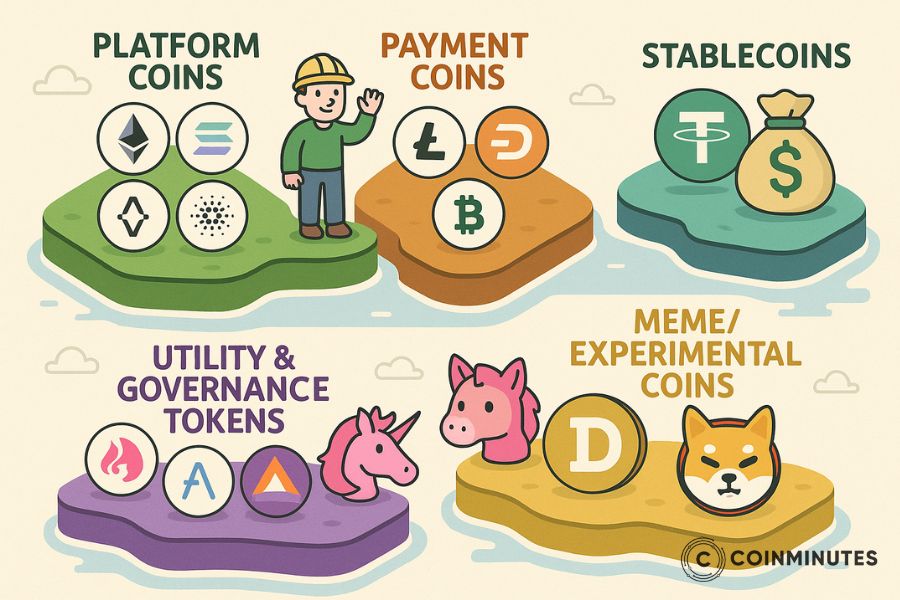
1. Platform Coins
These are the main base layers, the digital earth over which the main applications and tokens get their energy. In fact, they could be referred to as the OS of the decentralized internet. The platforms’ native coins are indispensable. The users do them to make the payment for the transaction fees. The ones which are used to initiate a smart contract. In most cases, the ones which are used for staking in Proof-of-Stake networks. They shall be the ones, enabling their respective ecosystems to operate.
Ethereum (ETH) is the leading entity here. Its blockchain is the place where a great number of different tokens (like ERC-20s and NFTs) and the thousands of decentralized applications (dApps) live. Other important platform coins can be Solana (SOL), noted for its high transaction speed; Cardano (ADA), which is famous for its carefully research-based development; and Polkadot (DOT), which is striving to make different blockchains talk to each other (interoperability).
2. Payment Coins
These altcoins are purely designed to be superior money in the digital sense. Their primary objective is to enable transactions that are quick, cheap, and efficient, typically across borders. They usually seek a way to solve problems that Bitcoin has, such as the speed of transactions, the price, or scalability for the daily use of the cryptocurrency.
Litecoin (LTC) is the first one that was launched for the aim to have a lighter and faster Bitcoin alternative. Bitcoin Cash (BCH) was a breakout from Bitcoin of which the main concept was that big blocks would be used to process more transactions. Dash also offers features that are for the speedily and secretly conducted transactions.
3. Stablecoins
The volatility of the crypto market is extremely well-known and usually expressed in the form of a roller coaster ride. The stablecoins, however, do not retell the same story of the crypto world. The key characteristic of this altcoin is its being structured in such a way as not to have a considerable departure from the very first value. This is most often done by linking their prices to another asset, which is usually a major fiat currency such as the U.S. dollar. The stablecoins in the image are those that provide an absolutely safe reserve of the asset they are pegged to. Apart from that, they may be of the algorithmic kind or use the collateral of other cryptocurrencies to keep the price at the peg.
Tether (USDT) and USD Coin (USDC) are the largest stablecoins in total. Each of the two units is made up of two such units that have the same value as the U.S. dollar. They are the most popular trading tools among crypto traders on the exchanges. In such cases, they may be used as a temporary safe, a means of payment, and a bridge between the worlds of traditional and crypto if the market is at its most volatile.
4. Utility & Governance Tokens
In most cases, these are the tokens that are planned to be used as the primary means of payments for a certain blockchain project, specific ecosystem, or a decentralized application.
Utility Tokens: The easiest way is to think of them as the digital keys that give you access, a discount, or the points of a loyalty program. They provide users the right to be the user of a particular product, service, feature, or function on a platform.
Filecoin (FIL) is the utility token that is built to serve as the means of payment to those who are storage providers of the data that is running on the decentralized Filecoin network. Basic Attention Token (BAT) is a part of the Brave browser, where it is possible both to hand over the users for watching ads and to donate to the creators of the content.
Governance Tokens: The tokens with which the owners can, for example, decide who gets the most votes and, therefore, have the most influence on the future development, the changes, and the operational conditions of a decentralized protocol or organization—usually a Decentralized Autonomous Organization (DAO)—that are the voting rights.
The main governance token of Uniswap decentralized exchange is Uniswap (UNI). The holders of UNI are those who decide which proposals will be put to a vote and which will not. Aave (AAVE) tokens are the ones that give to the holders the possibility to take part in the governing of Aave, the lending, and borrowing protocol.
5. Meme Coins & Experimental Assets
Meme coins are at the wilder and more unmanageable end of the spectrum of altcoins. The same things that make rational financial analysts raise their hands in frustration are the reasons that they, however, secretly add these assets to their portfolio.
Meme Coins: The origin of these digital currencies is, most of the cases, internet jokes, memes, or viral social media trends. The price of those coins is most likely to be influenced by community enthusiasm, hype cycles, and endorsements of the influential figures, instead of a solid underlying technology or utility. After the introduction of the leading coin, some meme coin projects might become more attractive to holders by, for example, creating ecosystems or using cases.
It is a commonly accepted fact that Dogecoin (DOGE), i.e., a coin whose origin was a joke about a Shiba Inu dog, was the first meme cryptocurrency. Then the Shiba Inu (SHIB) appeared, which was to be the second most dominating force in that market. Basically, those coins are highly speculative.
Experimental Assets: The term is used to refer to the things that are a total novelty, completely untried or have only been on the market for a very short time in ultra-niche sectors. For example, a gaming platform-based digital currency, an original digital art project, a new method of community funding, or an experimental tech concept that is still in the process of being adopted can be referred to as such. Such assets are of high speculation and mostly they receive the hot and cold reactions from the supporters and the few hobbyists, respectively.
Investing in Altcoins: Opportunities and Risks
This is the part everyone wants to know about. Why do people pour billions of dollars into these things? And how do they avoid getting wrecked?
Why Investors Choose Altcoins
Let's be real: the main reason is the hunt for explosive growth. Bitcoin is a giant, and it takes a tidal wave of money to move its price. A small altcoin, on the other hand, can see its value multiply incredibly fast if it catches on. It's the high-risk, high-reward part of the crypto casino.
Beyond that, people invest to get exposure to brand-new technologies and to diversify their crypto holdings beyond just Bitcoin.
Volatility, Liquidity, and Market Dynamics
Here's the brutal truth: altcoins are a rollercoaster. It's totally normal for an altcoin to lose 30% of its value in a single afternoon for no reason at all. This is because they have lower liquidity (it's harder to buy and sell large amounts) and are much more speculative than Bitcoin.
This all plays out in market cycles. Often, after Bitcoin has a big run-up, traders will take their profits and rotate them into altcoins, hoping to catch the next wave. This period is famously known as "altseason."
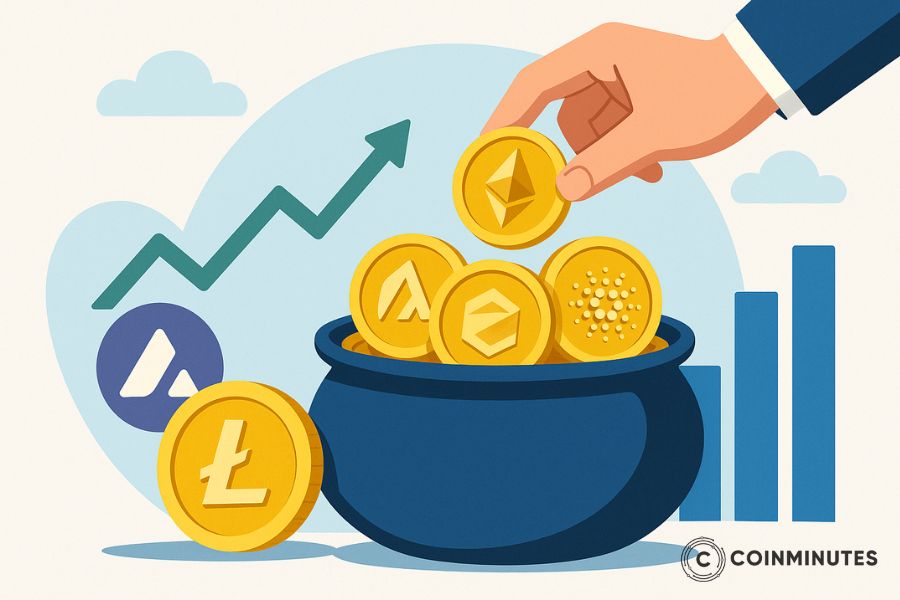
Identifying Promising Altcoins: What to Look Out For
So how do you separate the good from the bad and the ugly? You need a simple checklist. I always look for these four things:
-
Does it have a real job? (Utility): Does the coin actually do something useful, or is it just a digital pet rock?
-
Is the team public? (Team): Are the creators real people with reputations to protect, or are they anonymous cartoons?
-
Is the community real? (Community): Is a project's social media full of real people discussing the tech, or just bots spamming rocket emojis?
-
Do they have a plan? (Roadmap): Is there a clear, public plan for the future that the team is actually following?
Common Pitfalls & How to Avoid Them
I’ve made these mistakes so you don't have to. The number one killer of portfolios is FOMO (Fear Of Missing Out). You see a coin pumping and you jump in at the very top. Don't do it.
Other big mistakes include buying a coin just because some influencer on TikTok told you to, not doing your own homework, and going all-in on one longshot project. And according to the US Federal Trade Commission (FTC), consumers have lost billions of dollars to crypto scams in recent years. This highlights just how important it is to be skeptical.
Top 10 Altcoins to Watch in 2025
By mid-2025 the crypto market is jam-packed with ambitious, overhyped, and sometimes brilliant projects. The list is absolutely not a recommendation to anyone to make a money decision. Just a glance at the altcoins that are either gaining popularity, have reached a crucial development phase, or have already established a strong community and created a use-case. In other words, an observation-based field guide, not a treasure hunting map. The rankings are questionable, and nobody can predict the future.
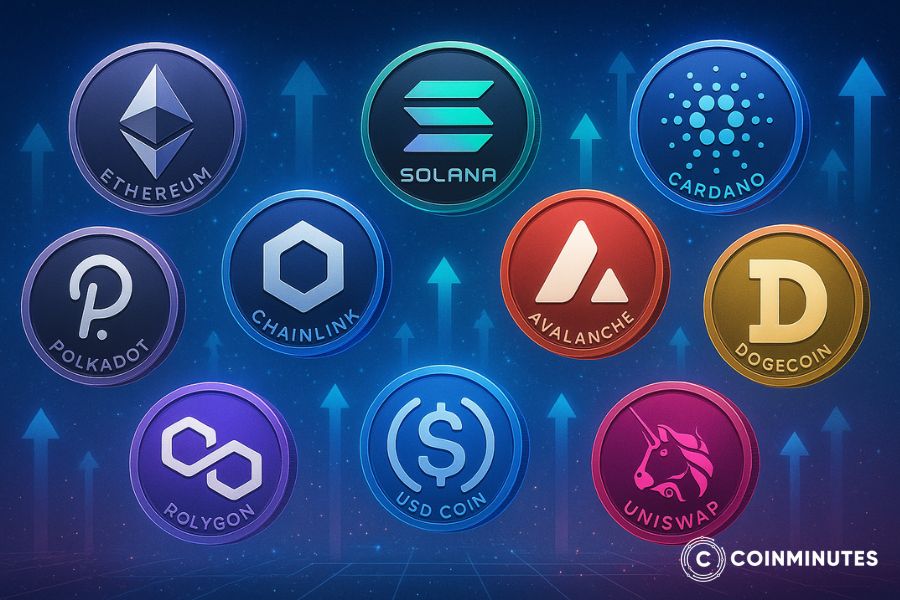
Ethereum (ETH)
Ethereum is the uncontested monarch among smart contract platforms. Its transition to Proof-of-Stake (known as "The Merge" in 2022) has reduced the electricity consumption of the network drastically. Scalability is a huge problem for them, however, they still push the envelope and are the first in DeFi, NFT, dApp areas. Its large developer community and network effects are enormous.
Solana (SOL)
The Solana network is a blazing fast and very efficient blockchain with no delays and no bottlenecks as measured by throughput and latency. Solana has established itself as the go-to platform for DeFi, the conventional financial world, and NFT market. Though a few technical issues occurred in the latest volatile periods, the Solana ecosystem remains firm, and, by all indications, it is going to be this way for a long time.
Cardano (ADA)
Cardano is a platform which is a research-driven approach, and it also focuses on peer-reviewed academic development. The gradual transition to smart contracts and the concentration on environmental aspects, welfare and governance has won it a very loyal community. The developments of its Hydra scaling solution and Voltaire governance era are very important.
Polkadot (DOT)
Polkadot was developed as a network that allows different blockchains to communicate with each other. The term Polkadot "parachain" refers to those blockchains that are technically separate but can establish a secure connection and function within the Polkadot network, thus, being able to interact with each other.
Chainlink (LINK)
Decentralized oracle network that is the best in the market. The contracts on the blockchain are volatile and need data from the real world that is reliable—price feeds, weather info, sports scores. Chainlink is thus the bridge that connects the two, resulting in a necessary piece of infrastructure, not just for DeFi but also for other applications.
Avalanche (AVAX)
Avalanche is a platform that puts a lot of emphasis on performance, capability, and modularity via the architecture of its “subnet." This system is therefore enabling the projects to launch their own validated blockchains that will be exactly fitted to their needs. Good in DeFi and suitable for attracting the enterprise's interest.
Polygon (MATIC)
A number one Layer 2 scaling solution for Ethereum that is most widely used. Polygon provides various instruments, including its PoS sidechain, zk-rollups (like Polygon zkEVM), and optimistic rollups, to allow Ethereum to take up more transactions at a higher speed and at a lower cost. Is a key player in the Ethereum ecosystem.
USD Coin (USDC)
USD Coin is fiat-stablecoin number one that is one-to-one with the US dollar. This stablecoin is mainly focused on the regulatory area and its reserves, which are the Circle, are very transparent. It is the basis of DeFi swaps, lending, and the bridge between traditional finance and crypto. The only stability and good reputation of the coin have been the leading factors for it to remain the first place.
Dogecoin (DOGE)
Talking about Dogecoin, the first and the most significant meme coin is still going strong in its place. Back then, it was just a joke and didn't have any considerable value in 2013. What is most valuable to it now is an energetic community of people and some celebrities who are always full of praise for it. By the way, it is a PoW blockchain and, quite unexpectedly, the only one. The feeling and the community are the only things that keep it going, yet it is not at all beaten from the aspect of the culture.
Uniswap (UNI)
Uniswap's governance token is one of the biggest and most powerful decentralized exchange (DEX) - Uniswap. DEXs are the engines of DeFi ecosystem, as users can trade crypto-assets directly from their wallets without the need for middlemen. The innovation in the automated market maker (AMM) mechanism has been the main factor behind Uniswap's staying at the top.
Altcoins vs. Bitcoin: What Are The Key Differences
Bitcoin is the undisputed and market leader. The network of Bitcoin is currently capable of approximately 7 transactions per second on average with a block time of 10 minutes. The energy consumption of Bitcoin is on the level of that of small countries.
Altcoins are looking for different ways to achieve the same result. Ethereum enables programmable money via the implementation of smart contracts. Solana is speed-focused with a 50,000+ TPS rate. Cardano is committed to academic research and the formal verification process.
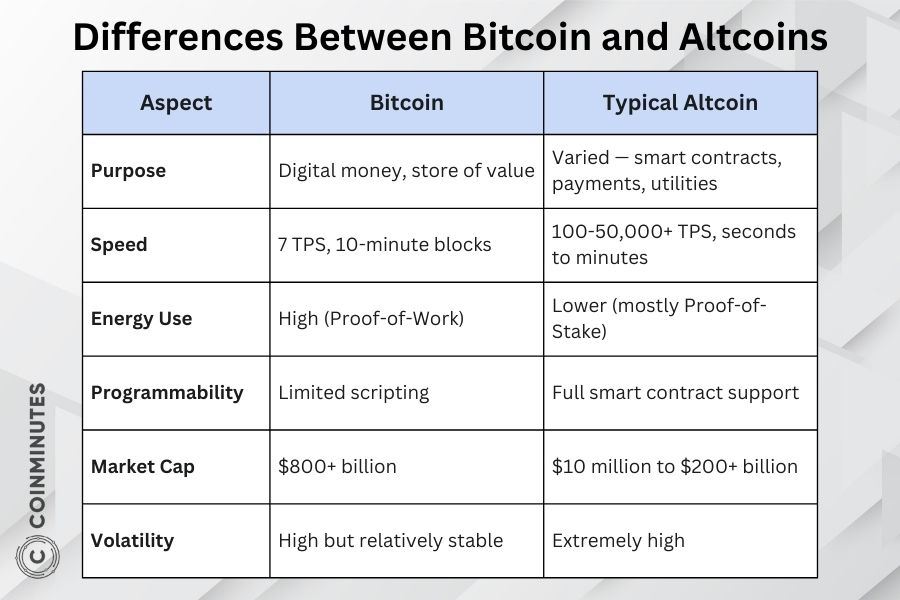
Bitcoin is still the most recognized brand and the first-mover. Institutional investors are comfortable with Bitcoin's simplicity and its proven history. Altcoins are appealing to those developers and users that have the features they need, which Bitcoin doesn't provide.
The bond is still mutually beneficial even though there is rivalry. Bitcoin's market share has an impact on altcoin prices. The innovations of the major altcoin sector eventually lead to Bitcoin developments. Both gain from the additional crypto adoption.
How to Buy, Store, and Use Altcoins
Getting started is easier than ever, but it pays to be cautious and methodical.
How to Buy Altcoins
Step 1 - Do Your Research (DYOR): Before you buy anything, you need to understand what it is. Read the project's website, look at who the founders are, and see if there's an active community on platforms like Twitter or Discord. Don't just buy something because a YouTuber told you to.
Step 2 - Choose an Exchange: For beginners, a centralized exchange like Coinbase or Kraken is a good starting point. They are user-friendly and have strong security measures. As you get more advanced, you might explore decentralized exchanges (DEXs) like Uniswap.
Step 3 - Create and Secure Your Account: You'll need to provide your personal information to comply with regulations. Make sure to set up Two-Factor Authentication (2FA) immediately to protect your account.
Step 4 - Deposit Funds and Buy: You can link a bank account or use a debit card. Start small. There is no need to rush. Buy a small amount to get comfortable with the process.
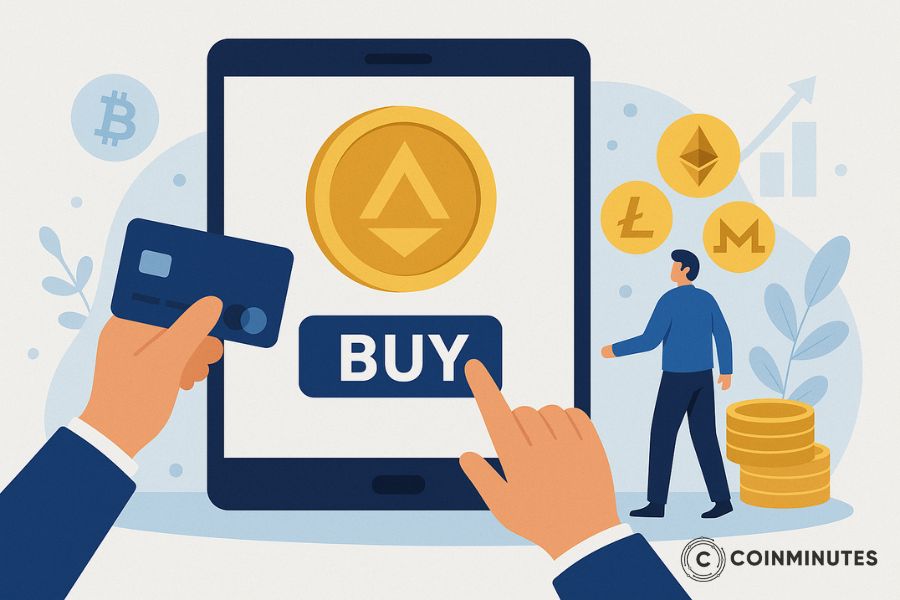
How to Store Altcoins Safely
This is the most critical step. There's a famous saying in crypto: "Not your keys, not your crypto." If you leave your coins on an exchange, you are trusting them to keep your assets safe. The only way to have true ownership is to store them in your own wallet.
Your wallet is controlled by a private key, which is a long, complex password. This key is represented by a seed phrase, typically 12 or 24 random words. You must write this phrase down and store it somewhere safe and offline. Never store it on your computer or phone. If you lose this phrase, your crypto is gone forever. If someone else finds it, they can steal all your funds.
-
Hot Wallets (Software): These are apps for your phone or browser extensions like MetaMask. They're connected to the internet, making them convenient for everyday use but more vulnerable to hacks.
-
Cold Wallets (Hardware): These are physical devices from companies like Ledger or Trezor that keep your private keys completely offline. If you plan on investing any significant amount of money, a hardware wallet is not optional; it's essential.
Using Altcoins in Everyday Life
Once you have some altcoins, you can start exploring the world of Web3. You could try staking your PoS coins to earn rewards, lend your stablecoins on a DeFi platform to earn interest, use a token to vote on a proposal for a project you support, or purchase an NFT from an up-and-coming artist. Each of these actions will teach you more about how this technology actually works.
How Altcoins Are Shaping the Future of Digital Finance
Altcoins are not just a sideshow to Bitcoin; they are actively building an entirely new, parallel financial system from the ground up. This movement is called Decentralized Finance (DeFi), and it's powered almost entirely by altcoins on smart contract platforms like Ethereum. Instead of relying on traditional banks and brokers, DeFi uses smart contracts—self-executing code on a blockchain—to create financial services that are open, global, and accessible to anyone with an internet connection.
Think about what that means. With DeFi, you can take out a loan, earn interest on your savings, or trade complex assets without ever having to fill out a form, talk to a banker, or ask for permission. Altcoins act as the collateral, the lending capital, and the governance instruments that make this entire system work.
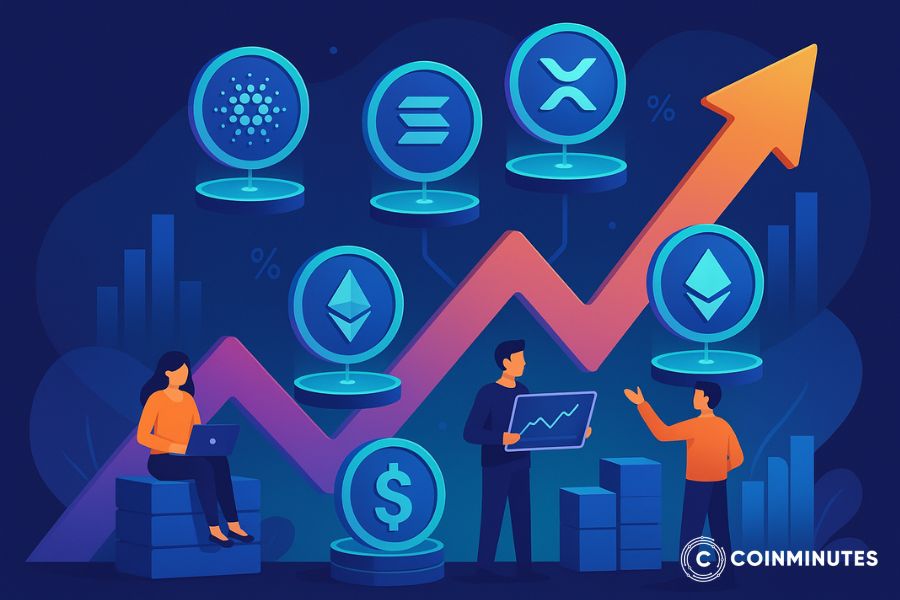
For example, platforms like Aave and Compound allow users to deposit one altcoin and borrow another, with interest rates determined automatically by supply and demand. Decentralized exchanges like Uniswap use altcoins to create liquidity pools that allow for trillions of dollars in trading volume without any central order book. This is a fundamental challenge to the way traditional finance has operated for centuries, and it's all being built on the back of altcoins. They are creating new financial instruments, enabling instant settlement for global transactions, and providing access to financial services for people who may have been excluded from the traditional system.
Altcoin Trends & Future Outlook
The altcoin world moves at lightning speed, and the trends are always shifting. A few years ago, it was all about ICOs. Then it was all about DeFi. Then NFTs. Staying on top of the next big narrative is key to understanding where the market is headed.
The Role of Altcoins in DeFi, NFTs, and Web3
Altcoins are the fuel for the entire Web3 ecosystem. They are not an optional part of it; they are the core of it. In DeFi, they are the assets being lent, borrowed, and traded. In the NFT world, they are the currency used to buy and sell digital art and collectibles. In the emerging world of Web3 gaming, they are the in-game currencies and rewards that create "play-to-earn" economies. As these sectors mature, the altcoins that power them will become even more critical pieces of internet infrastructure. The future of the decentralized internet is being built with altcoins.
Layer 2 Solutions, Interoperability, & Cross-Chain Altcoins
Two of the biggest technical hurdles for blockchain have always been scalability (how to make it faster and cheaper) and interoperability (how to make different blockchains talk to each other). The altcoins that are solving these problems are some of the most important projects to watch.
-
Layer 2 Solutions: If Ethereum is a busy, congested highway, Layer 2s like Polygon and Arbitrum are the new express lanes being built on top of it. They bundle up transactions and process them off-chain, making them incredibly fast and cheap. These platforms are essential for bringing the next billion users into crypto.
-
Interoperability: Right now, most blockchains are like isolated islands. Projects like Polkadot and Chainlink are building the bridges between these islands, creating a future where assets and information can flow seamlessly across different networks.
Regulatory Environment: What’s Next for Altcoins?
The government is here, and they're not leaving. For a long time, the crypto world was like the Wild West, with very few rules. That's changing fast. Regulators around the world are trying to figure out how to handle digital assets. This is one of the biggest question marks for the future of altcoins. Clear, sensible rules could bring a flood of institutional money and legitimacy to the space, which would be great for solid projects. But unclear or poorly designed rules could stifle innovation and create a lot of uncertainty. The ongoing debate about whether certain altcoins should be classified as "securities" is a key battle to watch.
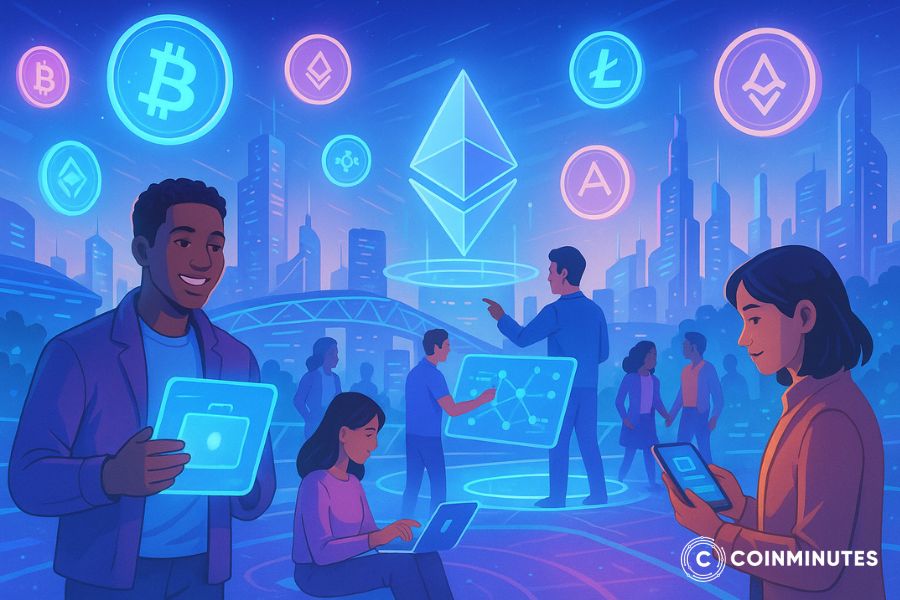
Expert Predictions: Where Are Altcoins Headed?
No one has a crystal ball, but there is a growing consensus among experts about a few key themes. The idea of a "multi-chain" future, where many different blockchains coexist, is widely accepted. The narratives that are getting the most attention for the next cycle are Real-World Assets (RWAs)—the tokenization of things like stocks, bonds, and real estate on the blockchain—and the intersection of Artificial Intelligence and Crypto. Ultimately, the projects that are expected to win in the long run are the ones that can prove they have real, tangible utility beyond just speculation.
Continue Your Crypto Journey with CoinMinutes
The altcoin market is a vast and fascinating universe, but it demands continuous learning and a healthy dose of skepticism. Staying up-to-date on the latest trends, technologies, and risks is not just helpful; it's essential for anyone looking to navigate this space successfully. The information presented here is a starting point, a foundation upon which to build your own knowledge base.
At CoinMinutes, we are dedicated to providing ongoing analysis, in-depth guides, and clear, unbiased insights into the ever-changing world of cryptocurrency. Our resources are designed to help you understand the market's complexities, identify promising sectors, and make more educated decisions. Whether you are just starting out or are an experienced investor, we encourage you to continue your crypto journey with us. The more you learn, the more confident you can become in your ability to navigate the future of digital finance.
 English
English
 Vietnamese
Vietnamese

